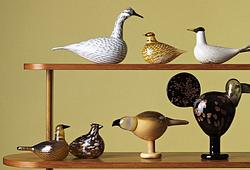Katsushika Hokusai (1760–1849), efter, samt Kobayashi Kiyochika, (1847-1915), färgträsnitt, 2 st, Japan, 1800-1900-tal.
Mount Fuji Viewed during a Fine Wind on a Clear Morning (Gaifû kaisei), from the series Thirty-Six Views of Mount Fuji (Fugaku sanjûrokkei), mått med ram 36 x 26,5 cm.
"The Winter Moon - Kinryuzan. View from the Banks of the Sumida River, Bildmått 31 x 19,5 cm.
Ej examinerad ur ram. Skuren. Blekt. Maskstungen, smärre hål.
Övrig information
The cone of Fuji seen on a summer day in fair weather with a gentle breeze. The sky is bright blue flecked with white clouds. The cone of Fuji is red slightly streaked with snow. This print, along with the 'Great Wave', is one of the most iconic and recognised by Hokusai.
Mount Fuji takes centre stage in a landscape with no sign of human presence. Only the mountain is occupying a large proportion of the design, rising up monumentally against a blue sky patterned with high wispy 'sardine clouds' (iwashigumo) that gently drift across in the breeze. Depicted is the eastern side of the mountain with its traces of snow remaining at the peak, at the moment the rays of the early morning sun hit the upper slopes of the mountain, enjoys it in a warm glow. The 'southern breeze' (gaifu) of the print's title is a phenomenon associated with late summer and Hokusai has gone to great lengths to capture its essence through his composition, color scheme and the printer's use of effects. This series created such a sensation that the publisher Eijudo expanded the original conception to eventually include 46 prints in this series. Another version pulled from the same block includes a line of trees, palely visible in the rain below the mountain, but this print more effectively implies the awesome moment of the summer storm by eliminating this explicit depiction of rain...
Also, when in good condition, this series is noted for its particular blue color, called "Berlin indigo" (bero-ai), a pigment newly introduced by Dutch merchants.
This print is in the collections of many museums around the world and similar examples are including:
British Museum, 1906,1220,0.525;
Harvard Art Museum, 1933.4.2699;
Metropolitan Museum of Art, JP2960; JP9; JP2568;
Museum of Fine Arts Boston, 34.314; 53.495; 11.17504; 21.6754; 21.6756
Honolulu Museum of Art, 2263;


















































